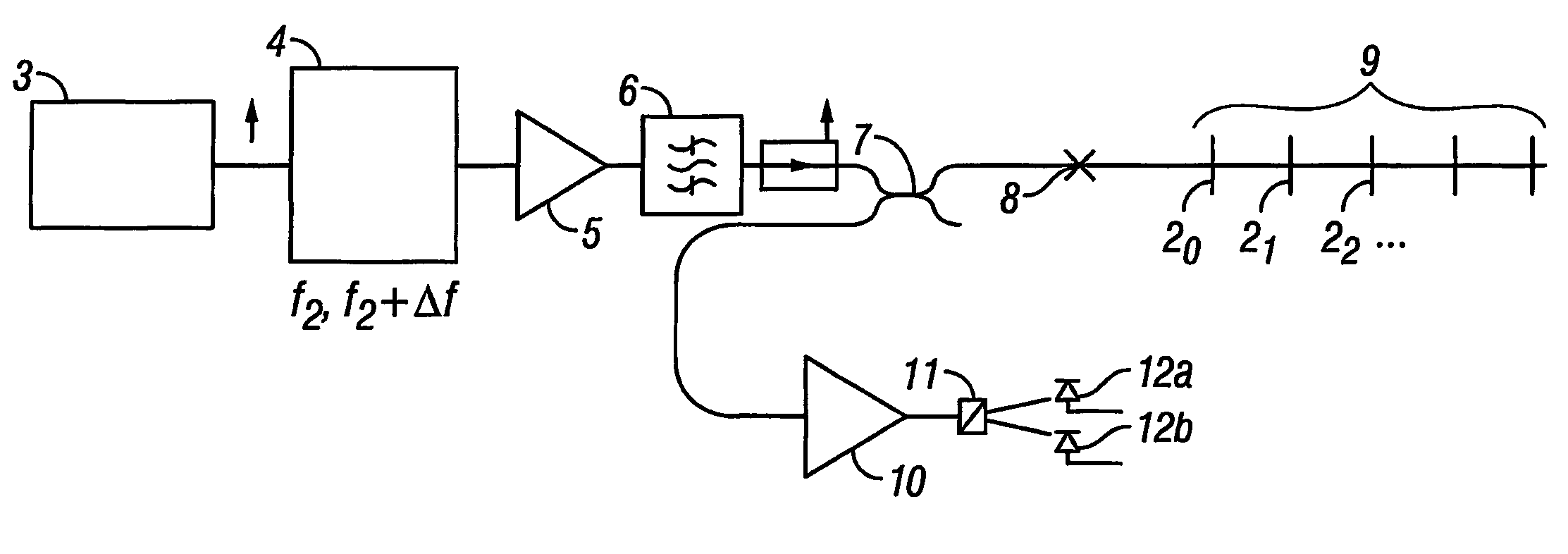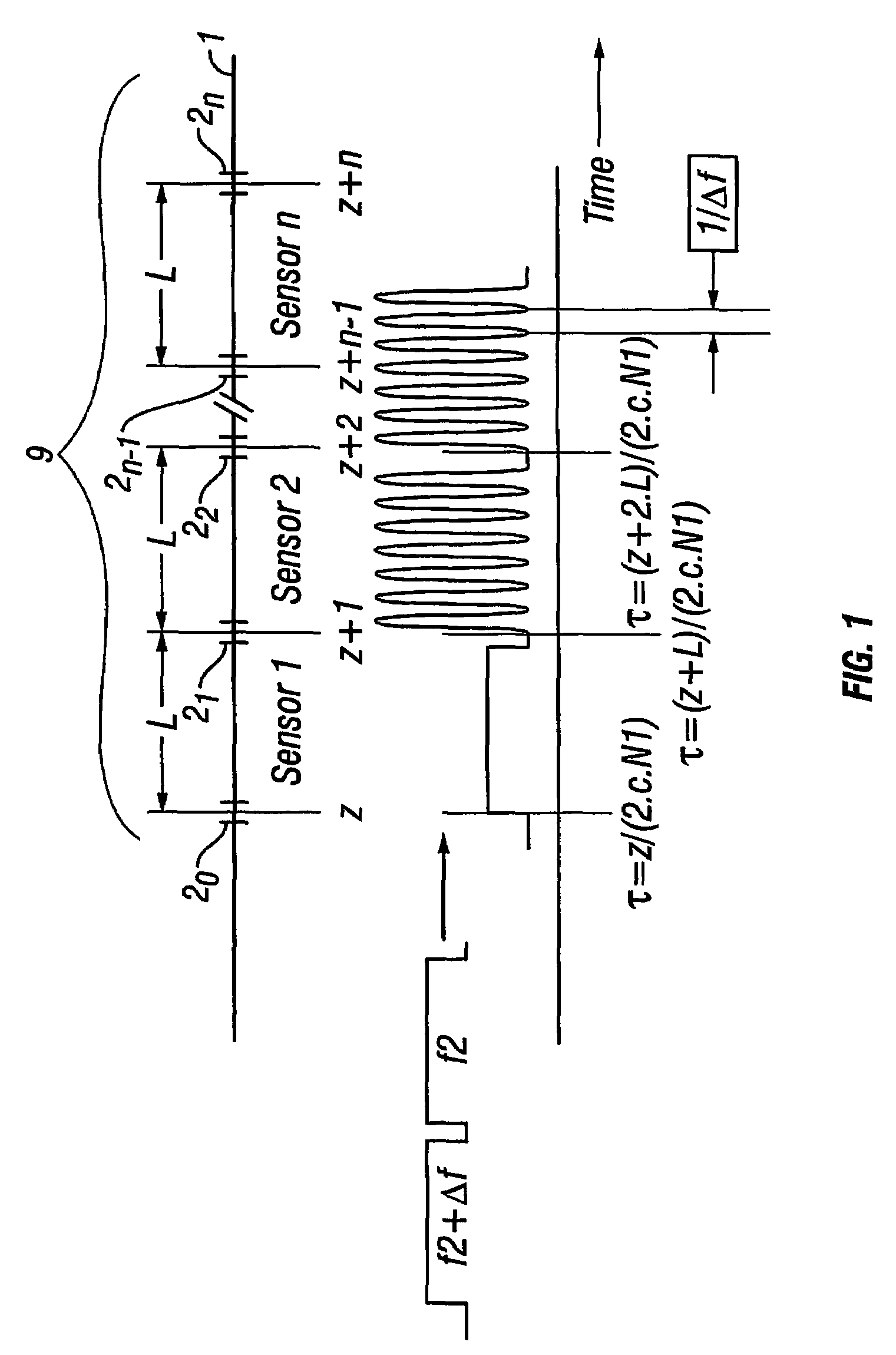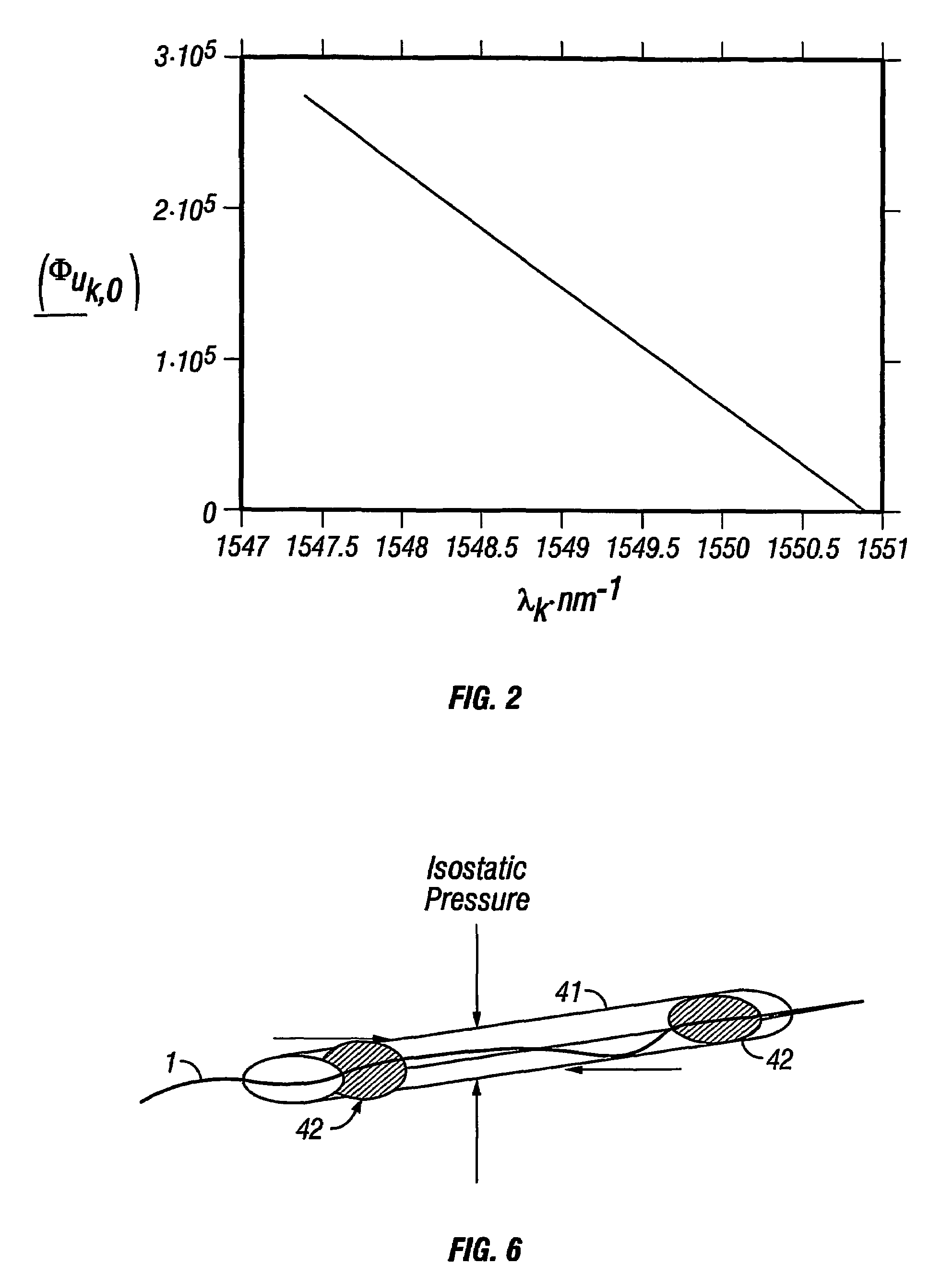Interferometric method and apparatus for measuring physical parameters
a technology of interferometry and physical parameters, which is applied in the direction of heat measurement, force measurement by measuring optical property variation, instruments, etc., can solve the problems of high cost of pressure sensors with adequate flow determination performance (e.g. permanent quartz gauges), marginal temperature resolution of dts systems, especially in extended reach drilling wells
- Summary
- Abstract
- Description
- Claims
- Application Information
AI Technical Summary
Benefits of technology
Problems solved by technology
Method used
Image
Examples
Embodiment Construction
[0054]FIG. 1 illustrates an array of reflectors 20, 21, . . . 2n, separated by a distance L (approximately constant), imposed onto an optical fiber. The section of fiber between each pair of reflectors 20, 2l, etc. constitutes a sensor element. The reflectors are intended to be quite weak, for example of order 0.1% reflectivity, partly to reduce losses to subsequent sensor elements, but also to reduce cross-talk between the elements.
[0055]Cross-talk between adjacent sensor elements is a seriously limiting factor in acoustic sensor arrays in the purely reflectometric arrangement. However, the simplicity of the arrangement, including the reduced number of fibers to be taken to the surface and absence of components such as downhole couplers make it extremely attractive in the present context. The trade-off is that the reflectivity of each reflector must be reduced to limit cross-talk, which of course then impacts on the signal-to-noise ratio that can be achieved. However in this case, ...
PUM
| Property | Measurement | Unit |
|---|---|---|
| temperature | aaaaa | aaaaa |
| wavelength | aaaaa | aaaaa |
| reflectivity | aaaaa | aaaaa |
Abstract
Description
Claims
Application Information
 Login to View More
Login to View More - R&D
- Intellectual Property
- Life Sciences
- Materials
- Tech Scout
- Unparalleled Data Quality
- Higher Quality Content
- 60% Fewer Hallucinations
Browse by: Latest US Patents, China's latest patents, Technical Efficacy Thesaurus, Application Domain, Technology Topic, Popular Technical Reports.
© 2025 PatSnap. All rights reserved.Legal|Privacy policy|Modern Slavery Act Transparency Statement|Sitemap|About US| Contact US: help@patsnap.com



